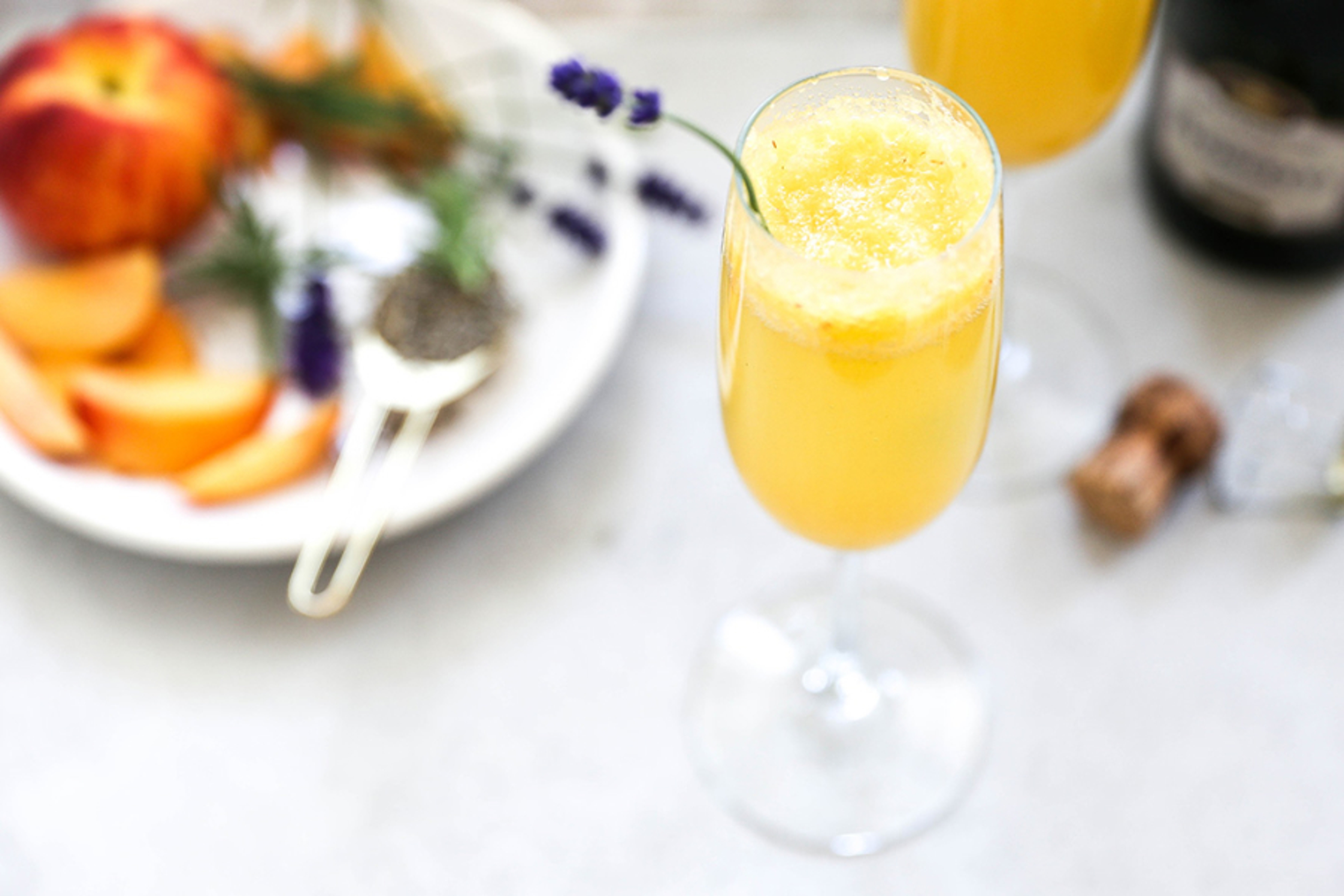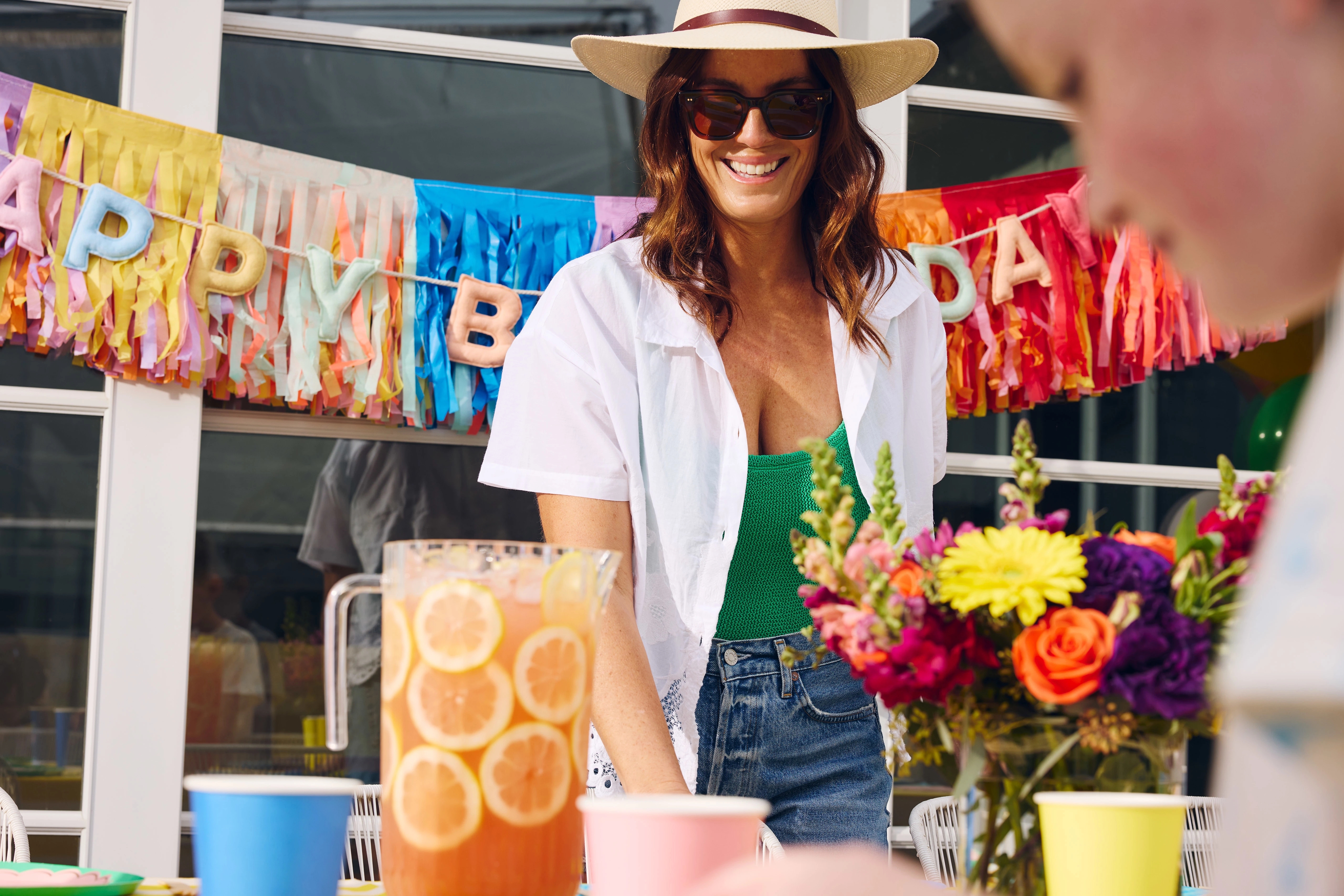Bellini vs. Mimosa: The Battle for Brunch Beverage Supremacy
What you need to know to master these two classic morning meal cocktails.
Oct 08, 2024
While brunch menus generally contain a mélange of egg dishes, pancakes, and other sweet and savory items, two specific cocktails — mimosas and Bellinis — have been indisputable morning meal mainstays for decades.
Both are made with Champagne or sparkling wine and just one other ingredient — orange juice in mimosas, and peach puree in Bellinis. Though two very simple cocktails to make, their journey to becoming the drink of choice at brunch are two different paths.
A bubbly birth
The Bellini's origin can be traced back to legendary restaurateur Giuseppe Cipriani. Cipriani invented the drink in the late 1940s at his iconic Harry's Bar in Venice, Italy, according to David Wondrich, drink historian and author of The Oxford Companion to Spirits and Cocktails and Imbibe! An exhibition of painter Giovanni Bellini's work reportedly inspired the cocktail's name; originally, though, it was served as an aperitif, not a brunch beverage.
Creating the actual drink appeared to be come to Cipriani just as easy. “The technique was to use a potato ricer, squish [the peaches], pour in prosecco, and you're done," Wondrich says. “It's a very simple drink."The mimosa's origins are bit muddier. American poet Harry Crosby wrote in his diaries, Wondrich says, that he drank orangeade and Champagne at a Parisian hotel in 1923; at the time, a similar drink was being served in London. (That libation, Bucks Fizz, contains more Champagne than a mimosa.)

Although orange juice had been a fairly novel ingredient, its inclusion in popular drinks like the Bronx cocktail — a blend of gin, and sweet and dry vermouth — prompted taverns to start stocking it more regularly.
“Suddenly, all the bars had it, and because of that, they were mixing it with other things," Wondrich says. “[Mimosas] filled a niche. They were fancy — the Champagne was important for attracting attention — and it was a gentle combination. It's like Champagne that's been mellowed."
Pre-lunch progression
People think of orange juice as an a.m. beverage, and this perception has helped mimosas become associated with brunch. And it is that connection that has fueled the drink's appeal, according to T. Cole Newton, chair and president of The National Bartenders Association, who began his mixology career at New Orleans' famed Commander's Palace and now owns two bars in the Crescent City.
“It's delicious, it's approachable, and, psychologically, being made with orange juice makes it inherently feel like a breakfast drink," Newton says. "At Commander's Palace, we served 1,500 people at brunch. Mimosa was by far the most popular brunch cocktail. When I work brunch now at my bars, the mimosa is still the most popular. It's the brunch standby."
Once mimosas, which pre-date Bellinis, were established as a morning drink, Bellinis, with their similar Champagne-and-fruit elements, also become linked to brunch.
But due to the puree component, Newton says, Bellinis are less common.
“The mimosa is the mainstream hit, and the Bellini is the cult favorite," he says. “Almost every bar can make a mimosa, whereas a Bellini is not something people just assume you're going to have the ingredients for. I would be shocked if it ever started to rival the mimosa — in part because only a handful of bars that are expecting to will be prepared to make a proper Bellini."
Mimosa and Bellini 2.0
In recent years, lots of inventive variations of both drinks have cropped up — many of which can be made at home. These range from Bellinis that contain rosemary, cinnamon, and pears to mimosas that feature items like cream, lavender, or English peas.
Canned nectars sold in grocery stores are thick enough to be used in Bellinis, Newton says, allowing for drinks with flavors like papaya and guava. Pineapple, mango, and most other tropical juices can easily be substituted in mimosas. Newton says a sparkling shiraz from Australia or Lambrusco from Italy can add a unique touch.
“There's room to experiment there," he says. “You could make a really interesting sangria-style mimosa beverage with a sparkling red wine, if you wanted to get super creative with it."
Crafting impeccable breakfast cocktails
Whichever juice option you choose, freshness is key to providing a smooth mimosa flavor. That's because many citrus varieties will become more tart over time, Newton says.
“When [citrus] is freshly squeezed, it tends to be a bit lighter, a bit sweeter," he says. “Peach puree goes in the opposite direction because it's the whole fruit, not just the juice. It continues to ripen, in a way, after it's been pureed. So once you open the container of peach puree, or if you're making your own, if it sits out for a while, it'll get sweeter."
Mimosas and Bellinis don't usually feature garnishes. If you decide to incorporate one, however, Newton suggests taking into account the flavor and aromas these embellishments will add. Placing a piece of a citrus peel in a drink can impact taste, for instance; spritzing the oil from the skin side of a peel over a drink will imbue scent.
If your Champagne pour has historically been volcanic, dropping a bit of orange peel in the glass will help prevent it from bubbling over.
“Champagne fizzes up a lot sometimes," Newton says. “But because the oils in the citrus counteract that, you can pour a lot faster into a glass if there's a citrus peel in there."
To avoid having to concoct drinks by the glass, brunch hosts can put out a pitcher of mimosas or Bellinis. Newton recommends mixing it close to when your guests arrive and keeping it cool, to retain the carbonation. Or, forgo the pitcher and just leave out a bucket of ice, carafe of juice, and bottle of sparkling wine for your guests. (Don't worry about the Champagne going flat; the narrower opening causes the gas to release more slowly.)
“A lot of people want OJ with a splash of Champagne in it; some people want Champagne with a splash of OJ; some are closer to 50-50," Newton says. "If you have a bottle of Champagne and juice side by side, people can choose their own adventure."
.svg?q=70&width=384&auto=webp)












